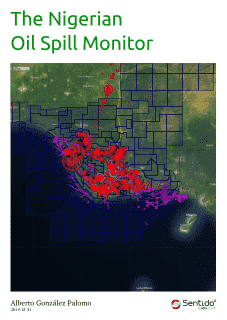Cedro
Cedro is a C language extension that works as a pre-processor with eight features:
- The backstitch macro
@. - Deferred resource release
auto ...ordefer .... - Break out of nested loops
break label;. - Notation for array slices
array[start..end]. - Block macros
#define { ... #define }. - Loop macros
#foreach { ... #foreach }. - Binary inclusion
#include {...}/#embed "...". - Better number literals (
12'34|12_34→1234,0b1010→0xA).
2022-08-04: Use #embed from C23 today with the Cedro pre-processor
Download
License: Apache 2.0
- Source code, cedro-1.0.10_20230321.tbz2
- GitHub: Sentido-Labs/cedro
Domo
Compact library for web applications.
Includes three components:
- dom: main object, contains an extended JsonML parser for concise XML/HTML DOM generation from Javascript, and element retrieval shortcuts by identifier or CSS selector.
- dom.Nexus: bidirectional binding utility to build HTML components and keep them synchronized with a model, which is just a plain Javascript object.
- dom.XPath: convenience XPath functions. This depends on the browser's XPath implementation.
Download
License: MIT
- Whole package including examples: (5.7 MB) domo-1.0_20210702_2052.tbz2
- Just the library: (3.8 KB) dom.min.js
Nigerian Oil Spill Monitor
2019-12-31The Nigerian Oil Spill Monitor is the software system used by the Nigerian National Oil Spill Detection and Response Agency (NOSDRA) for recording, mapping and monitoring oil spills. Citizens and other stakeholders can verify the accuracy of those reports at oilspillmonitor.ng
It was developed as part of the oil spill mapping project managed by the British NGO Stakeholder Democracy Network (SDN), funded mainly by the United Kingdom’s Department for International Development (DFID) through the Facility for Oil Sector Transparency in Nigeria (FOSTER) program.
From the 5th annual report of the FOSTER program:
Major achievements under this output through-out the life of the programme include the innovative platforms created by Stakeholder Democracy Network (SDN) and hosted within Nigeria’s environmental regulator (NOSDRA), that track and monitor oil spills and gas flaring with the aim of improving the responsiveness of the Nigerian government to these issues.
Nigerian Gas Flare Tracker
2019-07-03The Nigerian Gas Flare Tracker is a web application that identifies gas flares in Nigeria, and estimates the energy wasted, value of gas burnt, missing fees (gas flaring is illegal but that’s rarely enforced), potential for electricity generation, and CO₂ emissions.
This 2018 edition is the successor of the first Nigerian Gas Flare Tracker (GFT) I made in 2014, which was an adaptation of the Nigerian Oil Spill Monitor (OSM)
Xanadu Hypertext Documents
2019-04-25This is a new edition by Alberto González Palomo of the Xanadu System Proposal written by Chip Morningstar in 1984, from the only known remaining copy which was printed on 1984-04-25 at 12:45 PDT.
This is a document I wrote in early 1984 at the behest of the System Development Foundation as part of Xanadu’s quest for funding. It is a detailed explanation of the Xanadu architecture, its core data structures, and the theory that underlies those data structures, along with a (really quite laughable) project plan for completing the system.
At the time, we regarded all the internal details of how Xanadu worked as deep and dark trade secrets, mostly because in that pre- open source era we were stupid about intellectual property. As a consequence of this foolish secretive stance, it was never widely circulated and subsequently disappeared into the archives, apparently lost for all time. Until today!
Chip Morningstar in “A Lost Treasure of Xanadu”, 2019-03-09.



